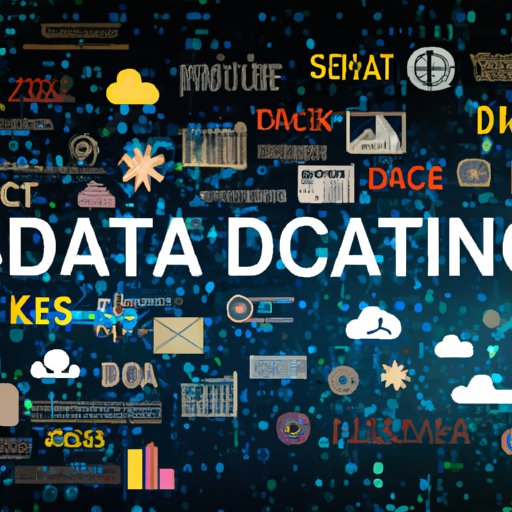Introduction
Data science is an interdisciplinary field that uses scientific methods, processes, algorithms, and systems to extract knowledge and insights from structured and unstructured data. It has become increasingly important in today’s digital world as businesses rely on data-driven decision making to remain competitive. But what exactly is data science and how does it work? This article will explore the basics of data science and provide an overview of processes, tools, and techniques used to make sense of data.
Exploring the Basics of Data Science: What is it and How Does it Work?
Data science is a combination of mathematics, statistics, computer science, and domain knowledge. It enables us to identify patterns and correlations in large datasets that can be used to better understand and solve complex problems. To do this, data scientists use various methods such as data collection and preparation, model building and evaluation, visualization of results, and more.
A Beginner’s Guide to Data Science: An Overview of Processes, Tools, and Techniques
Data science involves a number of steps, from collecting and preparing data to building models, evaluating them, and visualizing the results. Here’s a brief overview of the main processes and techniques used in data science.
Data Collection and Preparation
Data collection is the first step in any data science project. This involves gathering relevant data from various sources such as databases, surveys, and public records. Once the data has been collected, it must be cleaned and prepared for further analysis. This includes formatting, normalizing, and transforming the data into a usable format.
Model Building and Evaluation
Once the data has been collected and prepared, it can be used to build predictive models. This involves applying statistical and machine learning algorithms to the data in order to generate insights and predictions. After a model has been built, it must be evaluated to ensure it is accurate and reliable. This is done by testing the model on real-world data and measuring its performance.
Visualization of Results
Visualization is an important part of data science. It enables data scientists to present their findings in an easily digestible format. Visualizations such as charts, graphs, and maps can help to communicate complex ideas quickly and effectively. They can also be used to illustrate relationships between different variables and highlight important trends.

Understanding the Core Principles of Data Science and Its Applications
Data science relies on a set of core principles which include algorithms, machine learning, and artificial intelligence (AI). Algorithms are step-by-step instructions that are used to automate tasks or solve problems. Machine learning is a type of algorithm which is used to identify patterns in data and make predictions. AI is a form of machine learning which enables computers to think and act like humans.
These core principles are used in a variety of applications including predictive analytics, automated decision making, and image recognition. Predictive analytics uses machine learning algorithms to analyze data and make predictions about future events. Automated decision making uses AI to make decisions without human intervention. Image recognition uses AI to identify objects in images.

Unpacking the Different Types of Data Science Analysis and Their Benefits
There are three main types of data science analysis: descriptive, predictive, and prescriptive. Descriptive analytics involves summarizing data and understanding past trends. Predictive analytics uses machine learning algorithms to predict future outcomes. Prescriptive analytics goes one step further and recommends actions based on predicted outcomes.
Each type of analysis has its own benefits. Descriptive analytics helps to identify patterns and trends in data. Predictive analytics enables businesses to anticipate future events and plan accordingly. Prescriptive analytics provides recommendations for optimal outcomes.
Investigating the Latest Trends in Data Science and Their Impact on Businesses
Data science is constantly evolving and there are several new trends emerging. Big data and cloud computing are two of the most popular trends. Big data refers to the large volumes of data that businesses collect and store. Cloud computing enables businesses to access data and applications from anywhere in the world.
Automated machine learning is another trend that is gaining traction. This technology enables machines to automatically adjust their algorithms and parameters in order to improve accuracy and performance. Edge computing is also becoming increasingly popular as it allows businesses to process data at the edge of the network rather than in the cloud.
Conclusion
Data science is a rapidly evolving field that enables businesses to make informed decisions based on data. It involves a number of processes, tools, and techniques such as data collection, model building, and visualization. Data science also relies on core principles such as algorithms, machine learning, and AI. Lastly, there are several new trends in data science such as big data, cloud computing, automated machine learning, and edge computing that are impacting businesses.
In conclusion, data science is a powerful tool that businesses can use to gain valuable insights from data. By understanding how data science works and staying up to date with the latest trends, businesses can stay ahead of the competition and make informed decisions that will drive success.
(Note: Is this article not meeting your expectations? Do you have knowledge or insights to share? Unlock new opportunities and expand your reach by joining our authors team. Click Registration to join us and share your expertise with our readers.)
